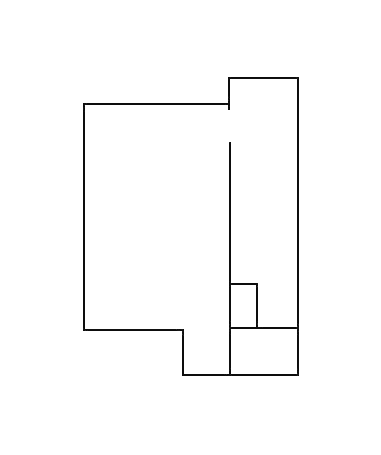MKNZ and Erin Frost ‘go on take everything’ red velvet cake, frosting, 2015
A community of feeling
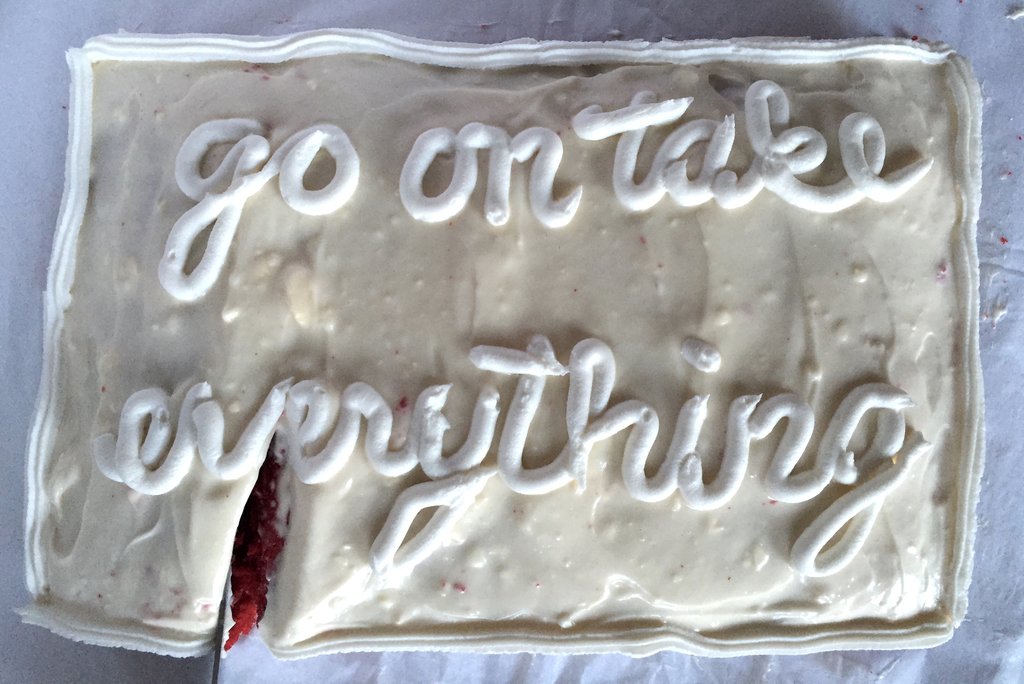
Written by Steven Dolan
“It seems that we started with a deficit. And by the time we got to the show, we were in this major state of abundance, of surplus, which thematically tied into the show. You actually can take everything. We don’t need it anymore.”
MKNZ, Erin Frost, Leigh Riibe, and Sierra Stinson are spread out in the living room of Sierra’s apartment. MKNZ is describing the journey that culminated in the show “go on take everything,” marking the 5th anniversary of Vignettes. In a short expanse of time, the four artists and friends each found themselves left by their partners in the homes they shared. Over the course of these heartbreaks, the four women grew closer, further cultivating a nurturing web of relationships that gave birth to an interweaving of art practice.
Speaking with the artists, it’s clear that the emotional turmoil they experienced individually and cared for collectively, comes secondary to the new love and relationality that emerged. The show is more about their reverence for healing and the bounty that followed than about the pain they endured.
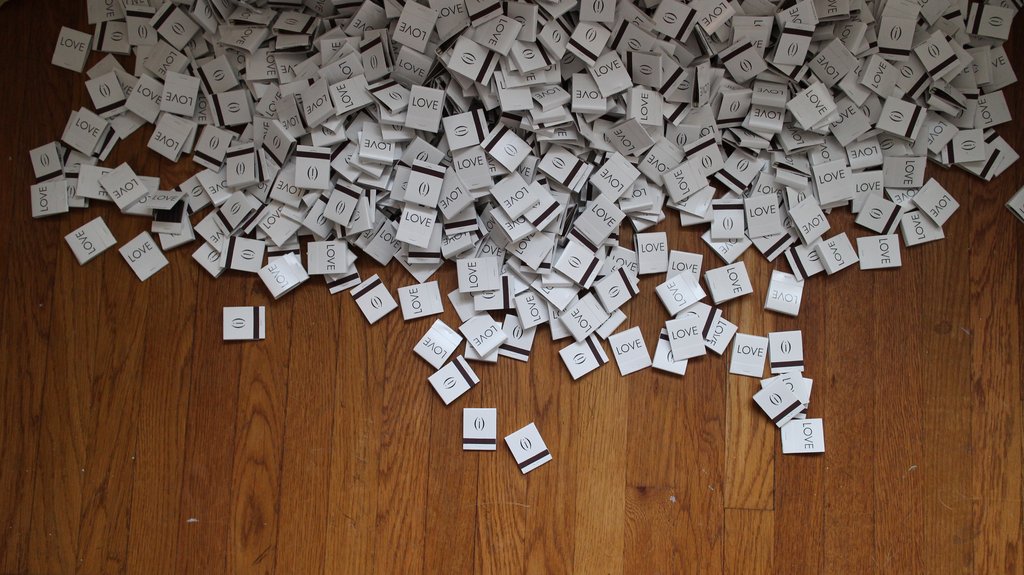
Leigh Riibe ‘Flammable’ Printed Matchbooks, 2015
The evening of the show, guests were greeted by a wall of Erin’s lipstick prints (“i want to lose them”) and other offerings, such as the red velvet cake by Erin and MKNZ that shared the show’s title and a pile of printed matchbooks by Leigh Riibe (“Flammable”). These pieces, composed of multiples that invited taking, constituting offerings of abundance. In giving freely to each other, the artists are equipped to share the loved they’ve reaped.
Wearing a wooden milkmaid’s yoke with two 45-pound salt blocks hanging from either side, MKNZ occupied the apartment’s bedroom, deprived of vision and most of her hearing. For the active two hours of the durational performance, she carried the weight of the salt blocks. Those that attended the show were invited to provide MKNZ aid by lifting the salt blocks in pairs, requiring the careful cooperation of those that stepped up. Anything less would offset her balance. Titled “The Inherent Codependency of the Heaving Heart,” the performance illustrates the kind of collective care taking that occurs in times of grief.
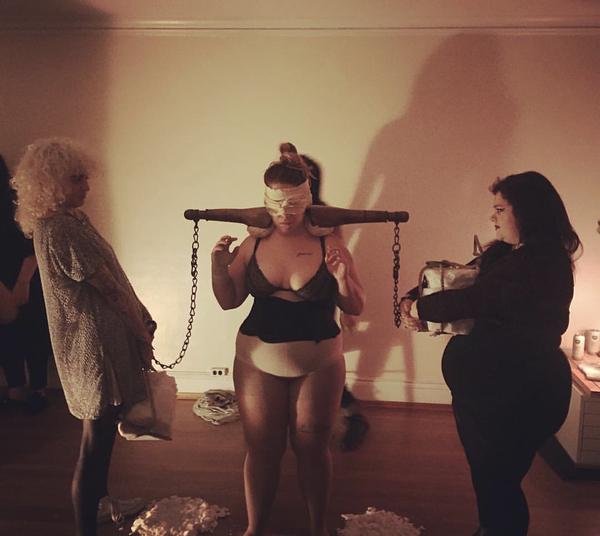
MKNZ ‘The Inherent Codependency of the Heaving Heart’ performance, 120 minutes, 2015
“It’s reminiscent to me of when you have a friend that’s really suffering and is kind of unreachable, in a dead-to-the-world sort of state,” MKNZ explained. “It takes a collaborative effort to care for that person. It can’t be one person’s job alone.”
Participants came in waves, gingerly taking up the weight, engaging in the tender ritual. A ring of viewers dotted the walls, observing the act, but also enveloping the performance in a network of symbiotic support and affirming energy.
The performance was not only a gesture of trust extended to MKNZ’s anonymous supporters, but also one of generosity. Individual identity was not relevant to this relation. Instead, it was predicated on the sheer fact of their shared existence. The burden of love is relevant to all of us, but it is up to us to answer its call.
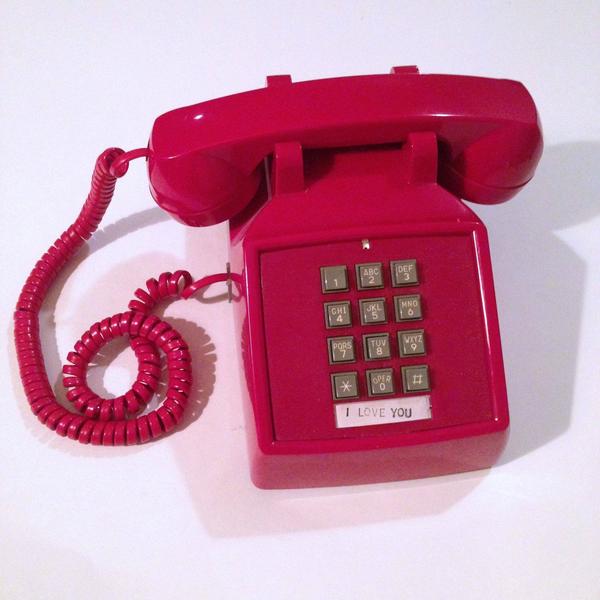
Leigh Riibe ‘Letters to Leslie 1991-1997 (age 10-15), telephone, audio recordings, 2015
Tucked away in the bathroom sat a red telephone, with the words “I LOVE YOU” standing in the place of a number. When one answers, they hear Leigh Riibe reading letters she wrote to her sister Leslie from 1991-1997, between the ages of 10 and 15. Leslie kept these, gifting Leigh a binder of her side of their correspondence for her 30th birthday.
“My sister has always been the person that has seen me throughout my life,” Leigh said. “She’s been the one that listened to me when nobody else would fucking listen to me and pay attention to me when nobody else would pay attention to me.”
The letters detail everything from suburban ennui and adolescent existentialism (“I figured out today that I have no life.”) to appropriately dated cultural moments (“My neck? I can’t hold it up without it starting to vibrate because it’s so sore from headbanging to Nirvana’s Nevermind.”).
The Christmas lists alone illustrate a depth that culture rarely allows girls. Requests are at times endearingly specific (“Stuffed animal that has to do with snowy weather, such as a seal or Lamonts 1992 Christmas bear,” “Pink cat eye sunglasses with jewels in the corners at Hot Topic”), absurd (“Breakfast in bed for the rest of my life”), and brutally honest (“Don’t get rid of Stella, Clarence, Morris, or Stubby”—Leigh’s pets).
For as much humor as there is, one also hears Leigh’s despair. Demands to write back are a constant, suggesting an aching isolation. A particularly heavy letter sees Leigh predicting the death of a friend whose drug use has left her feeling helpless. Her narration of the past teems with feeling. She occasionally laughs, she invokes the gravity of adolescent anger and effervescent girlhood, and sometimes her voice quivers. In delving into these wounds and whatever other emotional remnants the letters mark for her, Leigh harvests an emotional abundance that is not tied to a specific time, for through the process, she is creating a future.
“I think the overarching theme for the show for myself was healing,” Leigh noted. “Talking and interacting with that time of my life without judgement and playfully was really healing.”
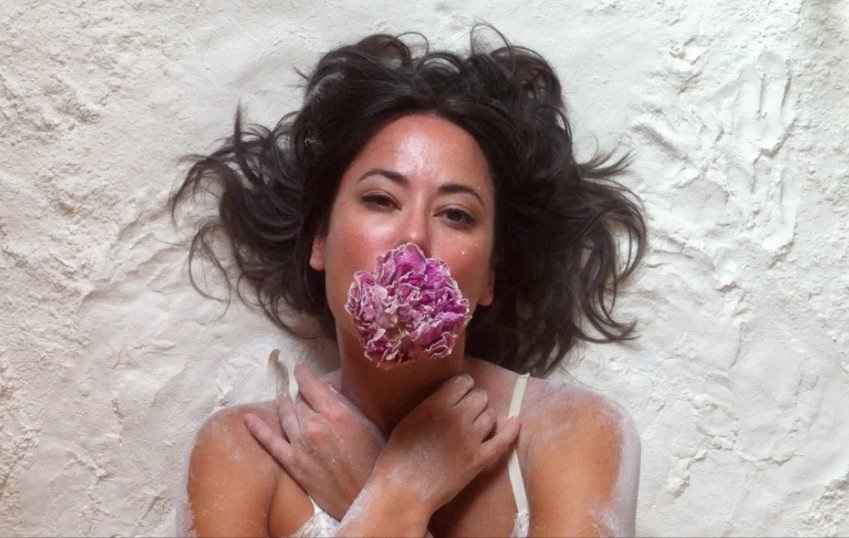
Erin Frost ‘that which has been your delight’ video still, 2015
Originally exhibited at Out of Sight, Erin’s “that which has been your delight” reaches a new intensity in conversation with her cohorts and the context of the show. Before the video’s creation, the death of a friend and her first love coincided within weeks. Having bought herself flowers after the first loss, she sat contemplating using the petals after the second, only to have them fall into her hand, sparking the piece that followed. One night swimming by moonlight, a friend, Adam Boehmer, put forth the phrase “making space for pleasure,” which became Erin’s mantra. “It just held me,” she explained.
The video begins with Erin face down on a bed of black fabric in a confrontational moment of grief. What follows is a sensuous exploration of feminine codes . We see a closeup of her sliding her arm through a sleeve of sheer, embroidered fabric and then slowly lifting the hem of her dress. Her hands dig into a visual field of flour. Milk glides down her nude body. Flowers are a near constant, even receiving their own milk bath.
What is achieved is not the masking of grief, but a cathartic moment of grief harnessed as pleasure. Erin taps these icons of femininity, articulating their potency and giving weight to beauty. She embodies a vision of emotional fecundity, illustrating the possibility of new life. Our culture teaches us to grieve quietly and conveniently, but her process rebukes that notion, instead choosing exhibitionism. Erin has no shame about her grief, nor her femininity, purveying and transforming these ideas as sources of power and strength.
“I think that when you’re feeling stripped when you lose things, you are faced with that power in yourself,” Erin suggested. “Everything falls away.”

Sierra Stinson ‘Two Vessels (Fill me up / Pour me out)’ 2 Channel Video still, 2015
In the kitchen, Sierra’s 2-channel video, “Two Vessels (Fill Me Up / Pour Me Out)” plays on a continuous loop. With a directness and simplicity, the video points at an essential emotional sensibility: one that not only externalizes or “pours,” but that also simultaneously internalizes or “absorbs.” One side of the video piece shows an amber-toned sponge taking in a steady drip, while the other demonstrates the mouth of a carafe pouring water. The shots are framed to focus on the actions, not the entirety of the objects themselves, nor the environment they exist in. In doing this, Sierra emphasizes a humble gesture that evokes clarity: perhaps it can be that simple to love and be loved.
“We are all vessels. I had that idea the week after I went through my breakup,” Sierra said. “I was like, oh, I’ve been this cup pouring out, pouring out, pouring out, to the point that I can’t do it anymore. And then I was like, I need to be the sponge. I want to be that. At first it was a negative outlook in ways, and then as I worked on it, I realized we can be both vessels always.”
It is through the realization of vulnerability and an active channel of loving that an emotional system as this can function and nurture the wellspring of love that we give and receive, the piece asserts.
As an exercise in vulnerability and an intersection of relation and creation, “go on take everything” realizes a radical form of artistic practice. It is often the case that patriarchal culture privileges a stoic approach to creation (and being in general) and a pointed separation between artist and work. Within this value system, transparent emotionalism, especially coming from feminine sources, is considered frivolous. Allowing oneself to be vulnerable is in direct defiance with a culture that would rather us remain isolated, navigating the world through dispassionate power moves, in lieu of a more considerate relation. The project of “go on take everything” envisages community as the space we create when we allow ourselves to care for and with others. In tandem, emotion, whether it inhabits typified avenues of relation or not, creates a community of feeling. Whatever social parameters exist, this field of being is indestructible. We need only open ourselves to its infinitudes.
CURATOR’S CORNER: Interstitial

A Conversation with Elizabeth Spavento & Julia Greenway
Julia Greenway, the curatorial director of Interstitial has brought on co-curator Elizabeth Spavento, known for her curatorial project ALL RISE a temporary art installation project at the Denny substation in Seattle to discuss their programming this year. Julia will also be spending a month-long term of research and network building in Hong Kong thanks to the New Foundation New Fellows Grant she received for this spring.
Enjoy their conversation below!
Elizabeth Spavento – I was wondering if you wanted to do some kind of live chat thing?
Julia Greenway – Rad, into it.
ES : Okay cool. I figured it’s more conversational and less like a novel, which is where I tend to go when given a blank page.
JG : I think if we can just hash out some information/get something in writing, that will be a good start.
ES : Okay cool! I was also thinking we could incorporate some of those links in our drive folder, too.
JG : Totes
ES : Awesome.
JG : I have been pulling images too.
ES : Ooooohhh! Nice
Would you like to start?
JG : Okay….
I was thinking we would touch briefly on individual exhibitions, and then talk about our goals for the overall concept of the year. Does that sounds good?
ES : Yeah, that’s perfect.
JG : Alright cool, I’ll talk about Nichole van Beek then, our current exhibition:
ES : Oh wait!
JG What do you got?
ES : I wonder if we need to establish context for why I am in the conversation… Or, people just know already?
JG : Good call.
ES : Sorry just thinking out loud, didn’t meant to disrupt the flow.
JG : No, that’s good.
We should probably talk about what Interstitial is because ppl may not know.
ES : Okay, great. Let’s start there: Interstitial, guest curator, Nichole’s show, Mario’s show, wrap up with theme for 2016.
JG : Rad. Perf.
Okay, so Interstitial is a contemporary space in Seattle that supports the exhibition of artists working with ideas related to the consumption of new media. Our Georgetown gallery is our first brick and mortar space, that has been facilitating solo exhibitions since opening in 2015.
Let me just say also, that I love that little gallery and it has been such an incredible experience for me to have a consistent space to program. For better for worse. It’s a ton of work, but I really believe in the conversation that are being facilitated there.
That’s really what it has always been about: facilitating conversation around how we are interacting with media, how we are being impacted by it, and how art practices are evolving because of the accessibility of media.
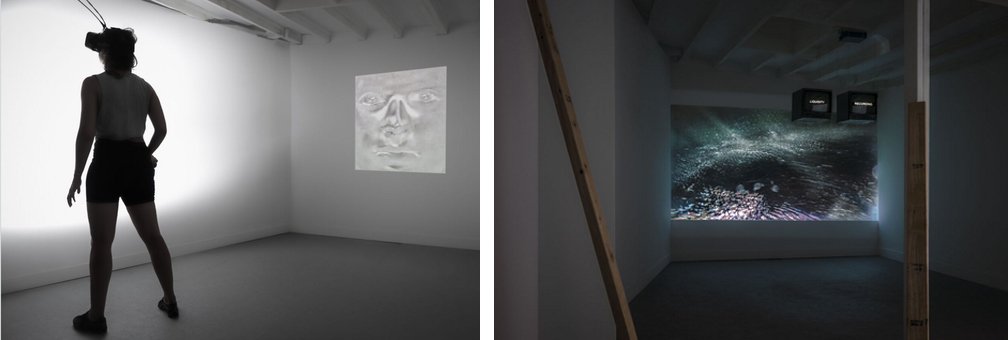
Adam Ferriss, Unsupervised Learning Pete Fleming, Dispersal Patterns
ES : Definitely! I feel like Seattle needs more independent spaces like Interstitial. In my opinion, that’s typically where the best art is because there’s more freedom to experiment, take bigger risks and provide emerging and established artists a unique opportunity that loses its edge when it becomes institutionalized.
JG : Totally.
ES : Not to mention the fact that Interstitial is dedicated to exploring practices in new media. I think you’re creating space for voices that usually get drowned out. And, I’m excited to be a part of it!
JG : My curatorial practice and by default Interstitial’s programming has been very much about engaging with video, new media, and tech based art. As of recently, I have been working on reevaluating my relationship with this medium and its value and conversation within contemporary art. Which is why it is great to bring in new curators and artists into the conversation.
ES : Can you tell me more about that? What is it that you’re reevaluating?
JG : Yeah….
I am reevaluating the why. Why new media, why do I find this medium valuable? With those questions in the last year, my aesthetic really evolved and I started to bring in artists the weren’t actually working in video or tech based art, but developing craft, social practice, prints, installations, even paintings to build on the concepts of new media consumption.
It wasn’t about the medium for me anymore but the concepts related to the medium.
I have also been noticing within our community that we really don’t how to talk about and experience new media art.
ES : Exactly. Why limit yourself? I think you begin to see the places where definitions like “new media” begin to change or shift when you open it up, which creates a more interesting dialogue and inspires new perspectives in my opinion
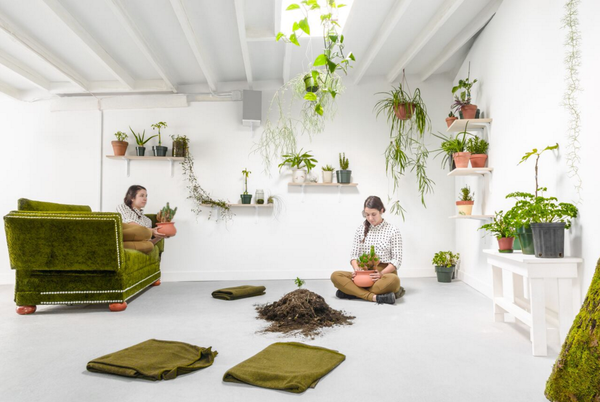
Nat Evans, Mutual Therapy
JG : Absolutely, that’s why we do what we do and hopefully find way of improving our practice.
ES : I would agree. Many people can recognize new media work when they see it but can’t move beyond that point. How do we incorporate these new technologies and retrain ourselves to experience it in an “art” context?
JG : That needs to happen on a conceptual level.
I believe in facilitating accessibility to the work first and foremost. Allowing the work to be visually stimulating and hopefully creating a space where a viewer can enter and have an emotional or physical response to the work.
The conceptual investigations come from supportive texts, conversations, artist talks. I also recognize that not every patron is seeking a conceptual investigations from an art experience.
ES : Yes! Can you describe how some of these things played out in the exhibition you curated with Nichole van Beek?
JG : Yeah, totally.
That exhibition is a great example.
“On Indigo Echo” was a great opportunity for me to have a different conversation about tech based art. Rather, a different avenue in talking about the role that craft and medium play in developing concepts.
Nichole van Beek is a craft based artist, and when I initially approached her about showing with Interstitial, she couldn’t see the connection.
ES : Yeah, how did you two get there?
JG : Her paintings look and feel so digital to me.
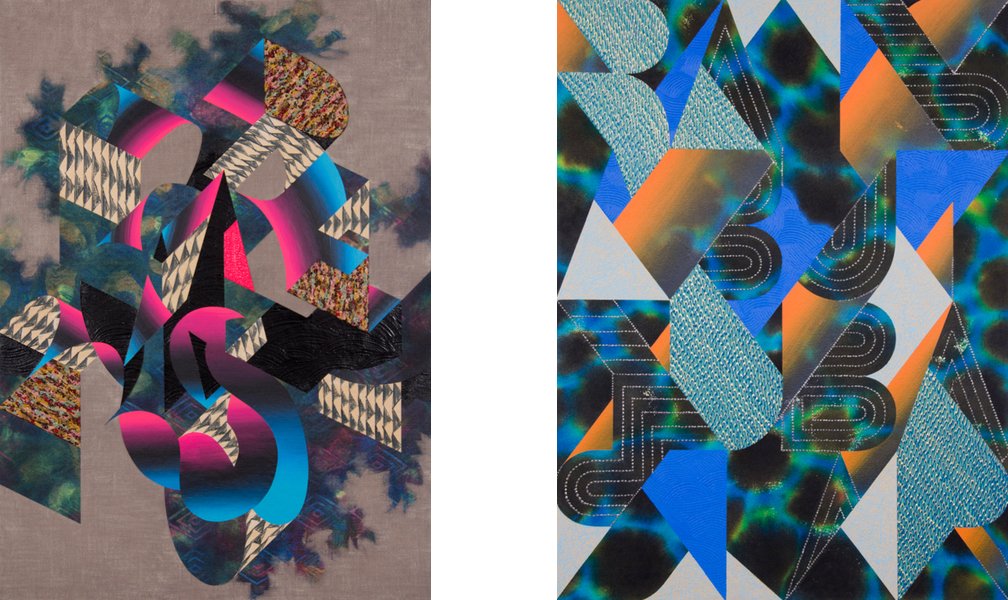
Nichole van Beek, Prey Nichole van Beek, Rats Abut Tuba Star
I encouraged her to use our space as an opportunity to develop an installation.
Instead of working on individual objects, she incorporated a quilting of her textile work, learned to macarame, and listened to the Voyager Golden Record during the development of this exhibition, which we ultimately ended up including as part of the installation.
ES : The work looked great in the space, too! At least, from all the photos I saw. I wish I could have been there!!
JG : Thank you! It’s gorgeous work.
I love the ground-ness of craft practices in relation to the unearthly space elements. During the opening the artist was passing out wearable space blankets, we were all dancing around and taking selfies. Amazing.
With the wearable blankets, the viewer becomes the link between space-faring technology and the human-scaled activity of textile making. The connections that she is making are so on point. For me anyways, and my curatorial objective.
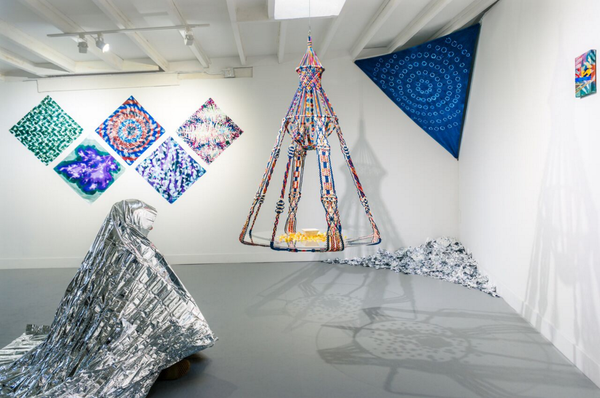
Nichole van Beek, On Indigo Echo
ES : Yeah diggin it! F’reals.
JG : Do you ever worry that you are geeking out all on your own, maybe even more then the artist?!?
hehehehe
ES : Ummm all the time.
JG : That’s such a funny thing about curating. When you are able to facilitate these connections, and your so stoked that the artist made these little choices that allowing you to go down a wormhole of radness. I can’t even tell how many Carl Sagan videos I watched when writing the essay for Nichole’s exhibition.
ES : Ha ha ha ha I totally relate.
JG : Fuck yeah.
Tell me what you are geeking out over lately?
ES : When you asked me to guest curate for Interstitial I immediately started going down these internet K-holes on issues of race and gender identity politics and new media works. I found so many cool links (did I mention the art bras??), inspired work and was challenged to think differently about certain assumptions I had going into it. I like these kind of self-led educational field trips because I think it makes ME better, which ultimately makes the work that I’m doing better.
JG : Tell me more about that–the links you were finding that allowed you to approach the medium differently.
ES : SO many things. I started re-reading essays by bell hooks, who was one of my favorite philosophers in undergrad, which led me to all of these heady texts on the rhetorics of race and how visual culture studies–particularly as it pertains to the internet–incorporates racial bias.
JG : Whoa. Amazing.
ES : I guess the one thing that stood out in particular that challenged me was in this essay that hooks writes about how blackness is perceived in white consciousness.
JG : Tell me more about that.
ES : I am utopian and overwhelmingly optimistic in my general outlook on life. I would argue that my interest in gender and racial equality stems from a deep-seeded belief in human rights as it pertains to ALL people. You know, one love. (Here’s where my hippie-dom becomes apparent)
Hooks argues that racism won’t go away if people viewed each other as “human” rather than through the lens of “race.” Racism is a system based on power and domination, the politics of which have created a black reality which is completely distinct from a white reality, and is why, in her opinion, one can identify a “black culture” to begin with.
The task is not to see everyone as the same but to identify that there is a difference, first, and to create spaces where the expression of that difference is accepted without it being categorized as “different” or “other.”
JG : That completely makes sense.
ES : It really made me stop to think about how in an effort to see everyone as the same, I was limiting my acceptance of all the beautiful ways we express difference. I was still obeying some kind of power structure while thinking I was dismantling it at the same time.
JG : That’s incredibly valuable.
How do we anticipate these conversation evolving or being presented? How do we implement or spread the knowledge about these ideas related to acceptance, while honoring our diversity.
ES : Well, hooks urges her reader to practice “self-love as a revolutionary intervention” since that undermines practices of domination. What she’s writing about is still totally in alignment with how I feel and think on a fundamental level as a hippie, but also completely revolutionary, particularly in light of movements like Black Lives Matter and the formation of black and white identities in the states. The crazy thing is that she was writing this in 1992!!
JG : To me this feels achievable through art. Do you agree?
ES : Yes, definitely. I think art has been historically been a place where conversations like these play out and continues to be.
JG : Exactly.
I feel like we have a bigger responsibility with this year of programming.
ES : Yes! That’s why I’m so excited about the work that Mario Lemafa is doing and why he was instantly my first choice when you approached me about curating a show for Interstitial. I’m amazed at how tapped in he always seems to be–he access ideas and thoughts that I’ve had trouble articulating with precocious clarity, particularly his work around (racial and gendered) identity, which he often posts on social media.
JG : Can you talk more specifically about how he is doing this?
What the results are?
ES : Sure! There was one project that he did for The TK Lofts where he took a bunch of clothing that had Hawaiian prints on them and used bleach to make them whiter. There’s something in that simple gesture that touches on issues of (post-)colonialism, ideas of whiteness (specifically how white has become synonymous with “better”), issues of cultural appropriation, dominance. The work asks us to consider the extent to which we wear our whiteness and whether or not we are asked to code switch given different contexts. We transition through these different aspects of identity as easily as we change clothes for different events. The first time I saw them was on his Instagram and on Facebook feeds. I was totally blown away.
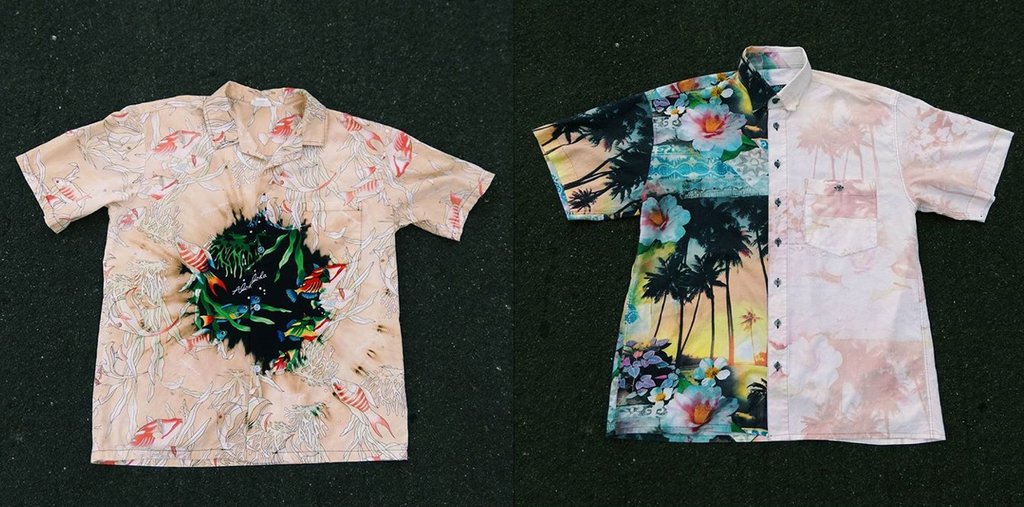
JG : That’s so smart.
How are the two of you talking about bringing those ideas into the gallery context?
ES : Mario’s work has always had a literary quality to me. There’s poetry in what he does. A while back he made these things that he calls “tab poems” which are screenshots that he snapped on his iphone of different images he was looking at online that had a connective thread running through them. For example, there’s one of a Magic (the gathering) card that says “FISSURE” on it, followed by an image of lightning, a crack in cement, a crack in a wall, a the place where a man’s arm meets the side of his body, and so on. I really encouraged him to keep going along this path and to explore these visual poems.
I love how they appear on the screen since they are easily identified as being taken from an iphone and they have this layered quality. There’s something about how they are simultaneously happening in succession and all at once.
I wanted to incorporate this kind of “iphone art” into the gallery without having there be literal iphones everywhere
I could go on…
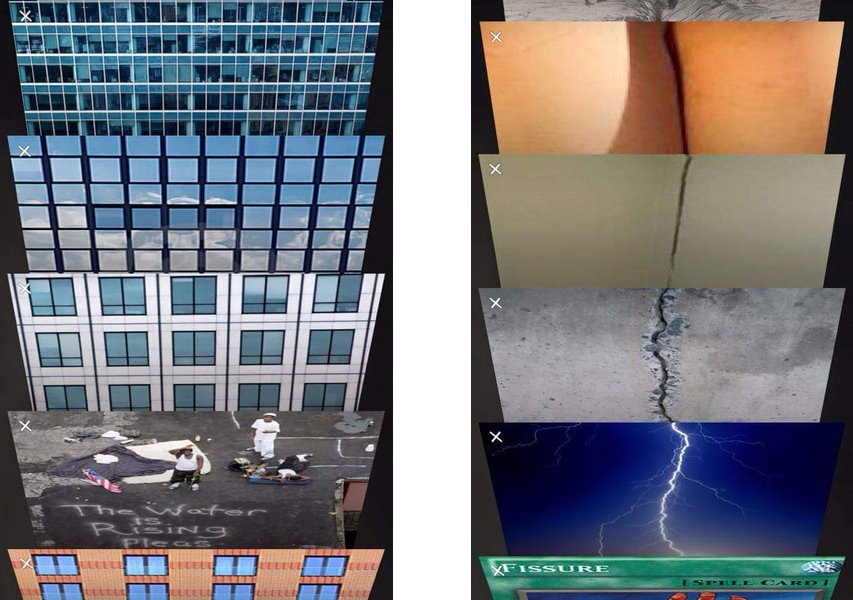
JG : Sure, keep going.
ES : I guess I’m reevaluating my relationship to new media work in a similar way. I don’t want to reduce my understanding of it to things you can view on screens–I’m much more interested in the areas that push the boundaries of that definition or demonstrate where general categories dissolve. I’d love there to be a performative piece or, like, a Vaporwave festival. And as much as I am excited about being recognized for my work in dealing with (non-white) identity, I am a bit hesitant to market myself (and interests) as an authority in this area. I care about the work that Mario and artists like him are making and the messy-ness of identity politics. We live in a world where so many things are packaged into these neat, seductive boxes–identity included–but this capitalistic influence is less real than the virtual worlds we have created for ourselves. I guess I’m interested in making a mess at Interstitial 😉
JG : Totally. Obviously, being self aware is important when dealing with these issues. As curators though, we have a responsibility to facilitate those platforms for the artist that we believe in and support.
ES : Yes! that’s so on point. As a curator I think it is our responsibility to be self aware when it comes to organizing exhibitions. I like to think that I get to stoke the fire and get people to think about and respond to difficult questions.
JG : 2016 at Interstitial is very much about that.
Things we’re into:
- This poem by Mark Doty about Tamir Rice: https://aprweb.org/poems/in-two-seconds
- This essay identifying a Radical Queer Tumblr Aesthetic: http://hyperallergic.com/66038/the-teen-girl-tumblr-aesthetic/
- This talk by Martine Syms that asks whether new media provides more outlets for black artists than conventional of distribution: http://martinesyms.com/black-vernacular-reading-new-media/
